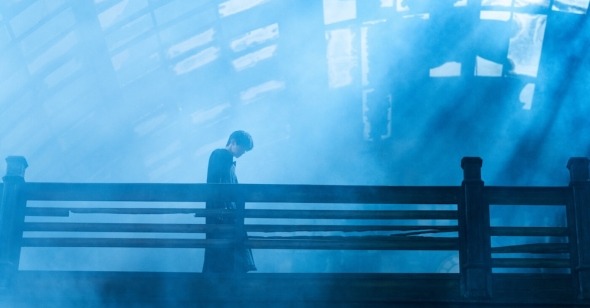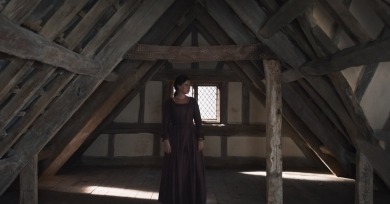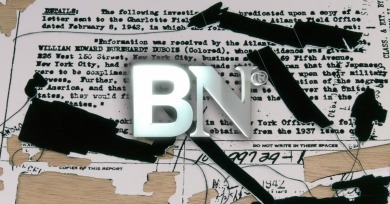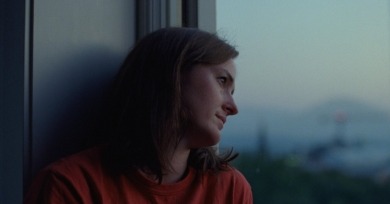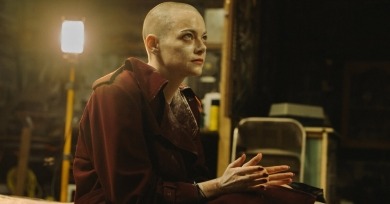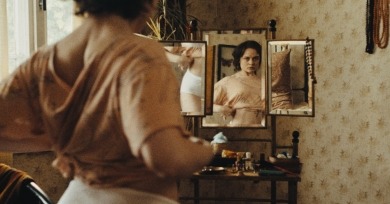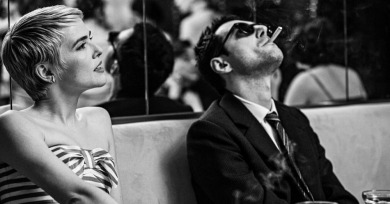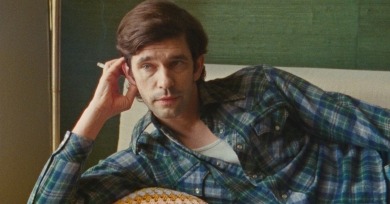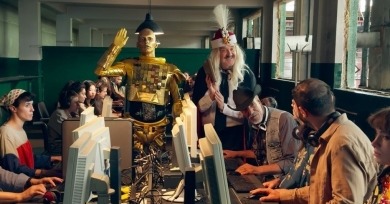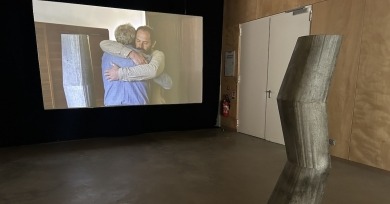For all our anxieties around the obsolescence of the medium, Bi Gan is moved by an unwavering belief in its subversive powers. Resurrection is not a valentine so much as a manifesto, a rousing wake-up call to all that cinema can still do.
The Secret Agent is a thriller to be sure, but while it delivers the requisite underlying suspense, it also disperses its genre imperatives, hot-wiring this man-on-the-run vehicle to veer off in unpredictable digressions.
The grieving man from Mumbai has the downward stare and stooped shoulders of the touch-starved, his back perpetually stiffened into a forbidding carapace. This is Anand, the recessive center of Cactus Pears, Rohan Kanawade's semi-autobiographical first feature.
Hamnet is impeccably tasteful, the interiors exquisitely and naturally lit and the exteriors strikingly framed, but this tastefulness grows wearying, even stultifying.
I realized that we Black people really have never had our CNN or our New York Times, but we are remarkably well-informed. Even a lot of the uneducated class of folks are remarkably well-informed. I had to ask myself: How is that? Why is that? How are we getting this information?
Khalil Joseph asks the viewer to connect the dots between these places, figures, and events, both fiction and nonfiction, the point is not to figure it all out. BLKNWS is a movie to get lost in, like a hypnotic chopped-and-screwed tape.
Trier seems to be confronting the extent to which life and art coalesce in the lives of creative families, dangling the question of whether artistic genius can redeem one’s personal sins.
Her physical acting might be less obvious than what Poor Things demanded, but if we were to draw a parallel between Michelle Fuller and her Oscar-winning rendition of Bella Baxter, the former is a highly evolved version of the latter judging by how her character assimilates learned behavior.
Sound of Falling anchors the undulations of history in a physical structure, a home inhabited by generations of people. That allows Schilinski to enter the past through oblique, almost surreptitious, methods, which casts history as a moving amalgamation of life’s minor and mirroring moments instead of dramatic apexes.
To invoke another luminary of the New Wave, it is a mid-budget marriage of truth and spectacle of which Truffaut would have approved, the sort of which today has become the most endangered species of filmmaking. In short, it is a film made by the Slacker director who also gave us Dazed and Confused.
While we were conversing, I think it was important to give her all my ears and my being, myself, to listen to her. This was really key because we differed in our points of view about certain things. Quite a few things, I would say: the role of women in life, tradition, faith.
The film often feels like a one-act play. It is foremost an experiment, in the same sense as Linda Rosenkrantz’s original mission to document the daily to-dos of her friends.
A Few Great Pumpkins
The Bad Seed, Halloween III: Season of the Witch, The Black Tower, Cure, Christine, What Lies Beneath, and When Evil Lurks.
The material is, of course, ripe for the picking, with Dracula/Nosferatu dramatizations spun regularly, each one more lifeless than the last. The logic of genAI, too, is by its own admission vampiric, receiving its life force by scraping the flesh of the internet.
The further one delves into Creton and Barré’s catalogue, the more the films begin to feel like pieces of an indivisible whole, one that encompasses the entirety of their personal and professional lives.
